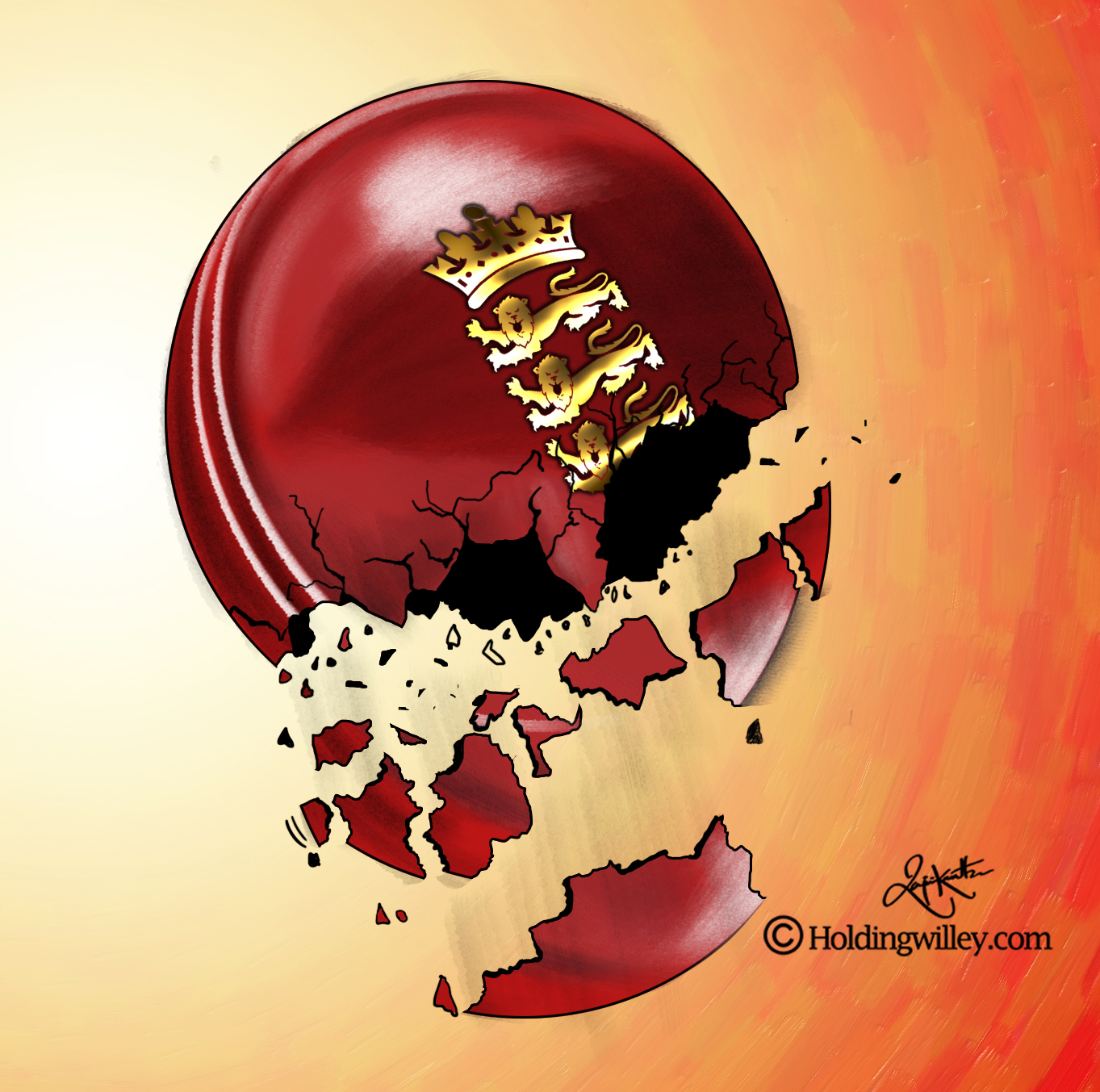 Not for the first time this Ashes series, England found themselves chasing plenty of leather, this time at the WACA Ground in Perth. Once again, their collection of right arm medium fast bowlers had no answer for Steve Smith and his merry band of batsmen on yet another hard, true, and rather lifeless Australian pitch.
Not for the first time this Ashes series, England found themselves chasing plenty of leather, this time at the WACA Ground in Perth. Once again, their collection of right arm medium fast bowlers had no answer for Steve Smith and his merry band of batsmen on yet another hard, true, and rather lifeless Australian pitch.
The home side, led by Smith and – more surprisingly – Mitchell Marsh, piled on the pain and misery to the tune of 662/9 declared in 179.3 overs of carnage during their first and only innings of the match.
In Adelaide, England were kept out in the field for 149 overs after winning the toss and electing to bowl. Even at the Gabba, when the first innings scores were evenly matched, England still spent 130 overs in the field.
Why are England struggling to take 20 Australian wickets? Their leading seamers Jimmy Anderson and Stuart Broad have over 900 Test wickets between them and are one of the most successful new ball pairs in history. The obvious answer, and the one most people have gone for, is their lack of pace.
Australia’s three quicks far outrank their English counterparts in terms of speed. Even the slowest member of their attack, Josh Hazlewood, eclipses the quickest of England’s bowlers, Chris Woakes, quite regularly. But is pace the only factor?
The last time England were successful on Australian soil was back in 2010/11. Throughout that series, their bowling attack featured Anderson, Broad, Tim Bresnan, Chris Tremlett and Steven Finn, of whom only Finn could be considered “quick” although Broad’s pace was higher back then. Of course, one major difference was the presence of Graeme Swann, a highly accomplished off-spinner and perhaps the best in the world at one stage, compared to Moeen Ali who is still a batting all-rounder despite the recent improvement in his off-spin craft.
So it wasn’t pace that saw England taste rare success Down Under, but good planning, better execution, and bowling to their strengths – something they haven’t done on this tour.
England Coach Trevor Bayliss and Captain Joe Root appear to be without a plan when it comes to dismissing Australia’s superstar captain. While they are not alone in this regard, as Smith has been dominating Test cricket around the world for some time, the English have seemed particularly clueless against the Australian maestro – he of the unconventional technique and strange scoring areas.
In Adelaide, Root was criticised for bowling first under overcast skies with the pink ball. It may have been the wrong decision in hindsight, but that decision didn’t cost England the game nor was it responsible for Australia amassing a strong first innings total. Root was let down by his bowlers, all of whom (bar Craig Overton) have plenty of experience at Test level.
England’s attack does well at home because they rely on swing and are adept at making the ball talk under those conditions. Granted, the Kookaburra ball and Australian surfaces offer them less assistance, but the new Kookaburra, and particularly the pink one, does swing.
Where England should have been bowling a fuller length and a more attacking line early on, they have been found out by bowling back of a length in an attempt to contain rather than attack. It’s almost as if they don’t believe they can take wickets in these conditions. It’s almost as if they believe the hype – you have to bang the ball into the deck in Australia. Unfortunately, they don’t have the pace to do that, so they should stick to their strengths.
In the second innings, Anderson & co. got it right. They bowled full and once again Australia’s weakness against the swinging ball was exposed. The home side’s batting line up, barring Smith, is good but not great, and are very vulnerable when the ball moves in the air.
So why didn’t England adopt this plan earlier? Perhaps from the second innings in Brisbane onwards? According to Anderson, the coaches hadn’t told them the right length to bowl. If a man with over 500 Test wickets doesn’t know what lengths he should bowl by now then England’s problems run deeper than we can already see.
Has the extra pace of Cummins, Hazlewood and Starc made a difference in this series? Of course it has; the Australians’ pace has allowed them to extract life out of unhelpful surfaces while also allowing them to intimidate England’s tail. However, the Australian quicks, along with their more than capable sidekick Nathan Lyon, have also bowled better lengths and planned more astutely than their English counterparts.
Instead of trying to match the home side for firepower, a battle well and truly lost before it began, England would be far better advised to return to the drawing board and set plans in place which are more likely to work for their attack. Something they do so very well under cloudy English skies on greener pitches.
Not only have England been beaten by pace and fire, but they’ve also been out-thought and out-planned. That’s what should hurt them the most.
Fast. Lite. Innovative. Shareable. Download our HW Cricket App, for Android and iOS!